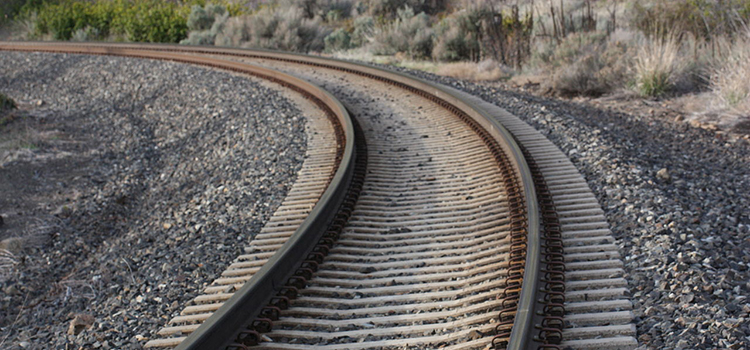The Amtrak Derailment And Newton's First Law

(Inside Science Currents Blog) -- Tuesday evening's deadly derailment that sent an Amtrak Northeast Regional train careening off its tracks has many people asking how such a tragedy could happen. Investigators on the case have not announced an official cause just yet, but it seems that speed played a major factor: the train was, apparently, traveling down the track at 106 mph, more than 50 mph over the posted speed limit on the bend where the train derailed, according to National Transportation Safety Board member Robert Sumwalt.
On a purely physical level, the train's derailment due to excessive speed can be understood in terms of Newton's first law of motion: an object in motion stays in motion and an object at rest stays at rest unless acted upon by an outside force.
Now, there are many forces that act upon a train traveling down tracks, all of which are significant. But, for the sake of simplicity, let's focus on two major factors:
1. The train's inertia – its resistance to changes in motion – which keeps the train moving forward.
2. Centripetal force, the force on the train so that it follows a curved path around a bend.
Here it's important to note that trains do not have steering wheels. Instead, a throttle moves the train forward at a speed chosen by the train's engineer. The burden of guiding the train in the right direction falls to the tracks themselves. The tracks and wheels are designed in such a way that when a train rounds a bend, the wheels hug the tracks as the tracks guide the wheels. Without the track in place, the train's inertia would simply keep the train moving in a straight line until another force acted on it.
So, applying this scenario to Newton's first law, the tracks are designed to provide enough outside force – in this case centripetal force – on the train so that it turns against its natural direction (straight), and around the bend.
This is where speed becomes an important factor.
A train's speed determines how much centripetal force the track must exert to keep the train on a curved path. If the train is moving slowly, the centripetal force is low. As the train speeds up, the centripetal force becomes larger. Double the train's speed and you quadruple the centripetal force that's needed to keep the train on track.
If the train's speed is too fast, the tracks can't push hard enough against the train to keep it on the tracks as it rounds the bend. The train tracks are designed to withstand only up to a certain amount of force coming back from the train.
It could be that in the case of the May 12 Amtrak train derailment, the speed of the train rounding the bend was too great for the track to withstand. Thus, Newton's first law prevailed: the object in motion remained on its course because the track couldn't bear the force of the wheels against it.
This simple illustration could omit some very important details that may come to light as investigators continue to piece together what exactly happened aboard the Amtrak train. For example, it doesn't take into account the condition of the tracks at the time, visibility or any elevation and banking on the curve. There are also several physical factors that remain unaccounted for like friction, torque and the center of mass in the passenger cars. All of these variables will have to be investigated. We can expect many more details to emerge as the National Transportation and Safety Board continues its investigation.
Editor's Note: This article was updated on May 14, 2015 at 10:15 PM to clarify the discussion of how a train's speed determines the amount of centripetal force that is needed to keep a train on track.
